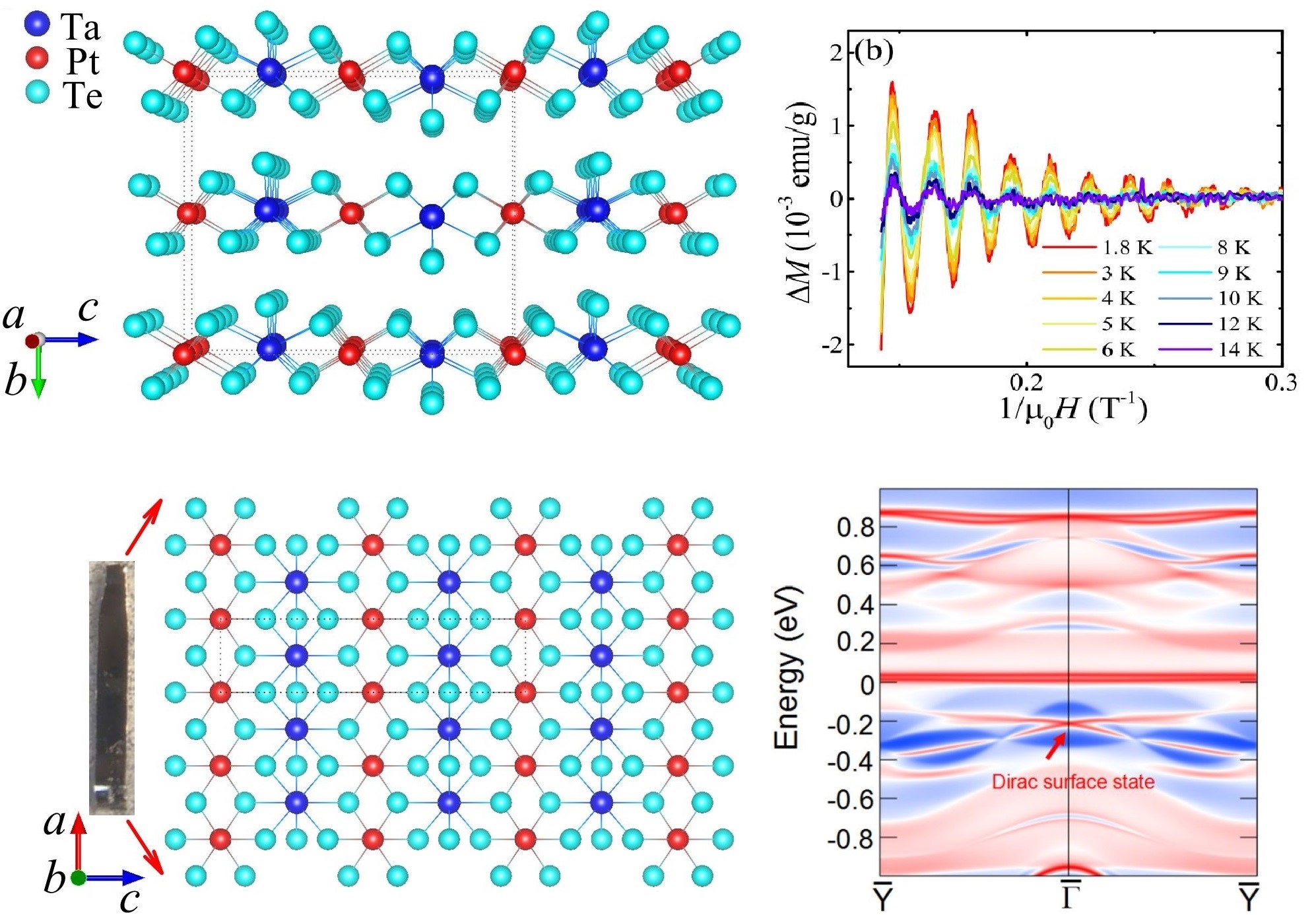A research group led by Prof. HE Shaolong at the Ningbo Institute of Materials Technology and Engineering (NIMTE) of the Chinese Academy of Sciences (CAS), has discovered a new low-dimensional topological Dirac semimetal, TaPtTe5. The findings were published in Physical Review B.
In recent years, the exploration of quantum materials with diverse symmetry-protected topological states has attracted great interest in condensed matter physics, thanks to the unique physical properties such as unsaturated large magnetoresistance, negative magnetoresistance, charge carrier mobility, chiral anomalies, superconductivity, quantum oscillations, etc. Besides, topological materials showed potential wide-scale applications in next-generation spintronics and quantum computing.
The majority of topological materials identified thus far possess two-dimensional (2D) or three-dimensional (3D) structural characteristics. Prof. HE's group at NIMTE discovered a quasi-one-dimensional (quasi-1D) topological Dirac semimetal, TaPtTe5.
By virtue of the self-flux method, high-quality single crystals of a layered ternary telluride TaPtTe5 was successfully synthesized. The layered structure is composed of alternative PtTe2 and TaTe3 chains. An anisotropic magnetoresistance and a nonlinear Hall effect at low temperatures were manifested in TaPtTe5. Based on the analysis of the de Haas–van Alphen (dHvA) oscillations which were detected with the field applied along the normal-to-layer direction, the typical signatures of Dirac fermions were observed, indicating that TaPdTe5 is a new topological material. The two light effective masses of charge carriers and corresponding nonzero Berry phases suggest the nontrivial band topology in TaPtTe5, which was further verified with the first-principles calculations.
The study revealed that TaPtTe5 is another member among the quasi-1D topological semimetal family, including TaPdTe5 and TaNiTe5 which were also discovered by Prof. HE's group.
Moreover, TaPtTe5 showed weak van der Waals interlayer interaction and thus is an ideal platform for further research and applications of low-dimensional topological materials. The study may shed light on the exploration of topological superconductivity in this class of materials by chemical substitution, voltage gating, or high pressure, since that the ternary telluride Ta4Pd3Te16 and Ta3Pd3Te14 with similar structural characteristics are superconductors.
This work was supported by the National Key Research and Development Program of China (No. 2017YFA0303002), the National Natural Science Foundation of China (No.11674367, 11974364, U2032207, 11974061) and Zhejiang Provincial Natural Science Foundation of China (No. LY19A040002).

Fig. The Crystal structure, quantum oscillations and surface states of TaPtTe5 (Image by NIMTE)
Contact
JIAO Wenhe
Ningbo Institute of Materials Technology and Engineering
E-mail: whjiao@nimte.ac.cn

